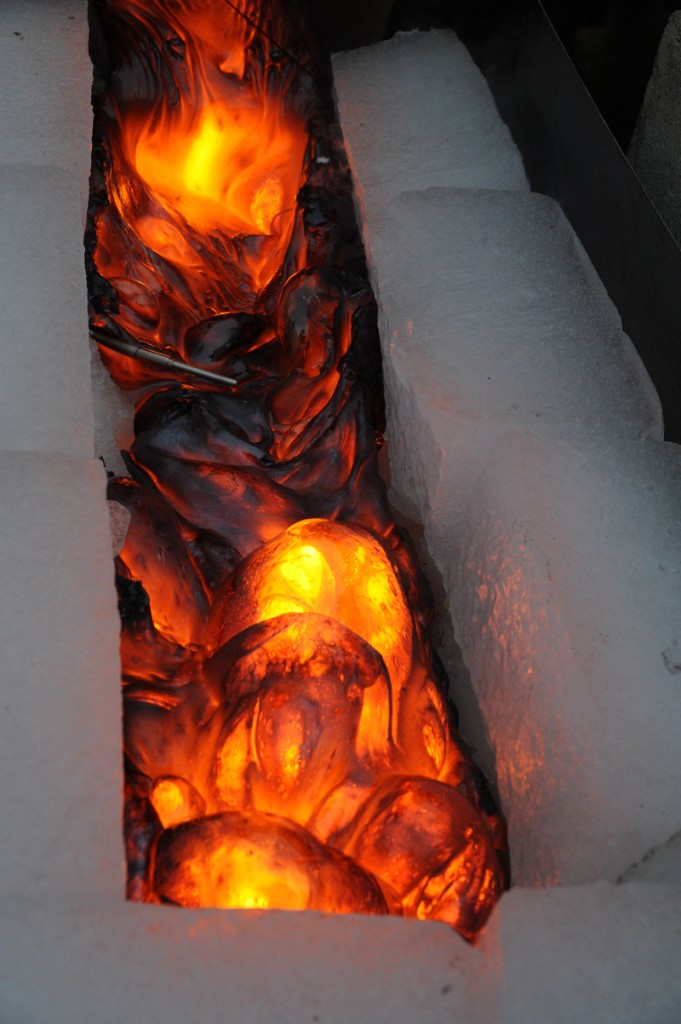Song of Fire and Ice: Watch What Happens When Lava Meets Ice

Lava flows over ice in an experiment whose results were published in Geology last week. Image Credit: Edwards et al via GSA
What happens when you pour hundreds of kilograms of molten lava over ice?
It might seem like a just-for-the-heck-of-it question, but the interactions between lava and ice can have a real impact on communities living near ice-covered volcanoes. (They exist!) When lava meets ice, the resulting mess can cause flooding, destroy valuable resources and even produce explosions.
There are more than 200 volcanoes currently covered by ice and snow, but researchers who published a paper in Geology on Friday about the phenomenon point out that observing eruptions of snow-covered volcanoes is difficult due to the typical remoteness of the sites. They scraped together data from the few observations they had, and also did real-time experiments, melting over 300 kg of lava and pouring it over ice at Syracuse University’s Lava Project:
<iframe frameborder="0" height="400" src="http://player.vimeo.com/video/19260895" width="600"></iframe>
The research found that lava didn’t always just melt through the ice, and flow under the surface. When lava was poured directly onto densely packed ice, the lava was able to flow over the simulated glacier at rates of tens of centimeters a second, lubricated by a layer of steam.
From the press release:
“The preliminary results of this study are both expected (ice melts!) and somewhat unexpected (lava can travel on top of snow; melted water can bubble up through lava). Benjamin Edwards and colleagues have also tested the ability of layers of volcanic ash (sand in the experiments) to slow down the melting process. Results show that if ice or snow is covered by volcanic ash at the start of an eruption, this will significantly slow the rate of melting if lava flows later move over the ash-covered ice. These experiments show good agreement with observations from volcanic eruptions in Iceland and Sicily, including the ability of lava to find weaknesses in ice and a tunnel underneath ice. Once the lava has found its way to the base of the ice, it can continue to flow beneath the ice layers by exploiting pre-existing fractures.”
National Geographic has a great slideshow of photos of lava and ice interacting, which were taken by the author of the Geology study, Ben Edwards of Dickinson College.
More from Smithsonian.com:
Geologists Make Lava, Unleash It on New York
How to Study a Volcano